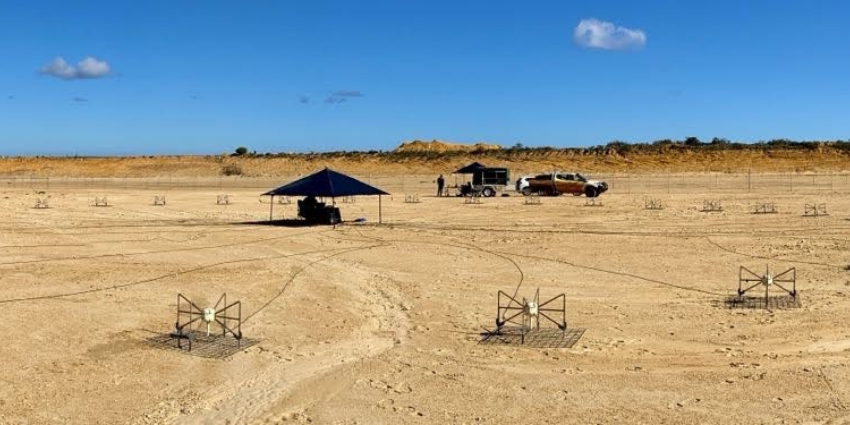
Background
The Defence Science Centre (DSC), part of the Department of Jobs, Tourism, Science and Innovation, offers support to Western Australian institutions to develop local capabilities and research to find solutions for current and future Defence developments.
The Defence Science Centre Collaborative Research Grant (CRG) provides funding of up to $150,000 to researchers looking to impact Defence capability in Western Australia.
In a DSC CRG project, researchers from ICRAR translated radio astronomy capability to design and develop a flexible, deployable and covert sensor system with the potential to operate as an inexpensive, highly configurable and covert passive radar.
Space-based systems play a vital role in Defence operations — from providing Position, Navigation and Timing information, to enabling personnel and platforms to stay connected.
But as space environments become increasingly congested with satellites and debris, Space Domain Awareness (SDA) systems utilising new developments in communications technology are needed to help mitigate degraded and disrupted space operating environmental effects.
‘As an SDA tool, the system has comparable sensitivity and deployability to other commercial systems and may be able to be calibrated to meet specific Defence use cases as they are presented to us,’ said lead researcher and Associate Professor Dr. Randall Wayth, from the Curtin node of ICRAR.
Approach
ICRAR researchers prototyped their portable sensor system based on existing radio astronomy technology, deploying it in a variety of scenarios to illustrate its flexibility and suitability for integrated intelligence, surveillance and reconnaissance.
‘Sensor technologies for SDA vary considerably in size, complexity, cost, and operating frequency. With this system, we demonstrate the potential for inexpensive low frequency interferometric aperture array technology to operate as a passive radar for SDA,’ Associate Professor Wayth said.
‘In building and demonstrating this prototype, ICRAR-Curtin has taken skills, technologies, techniques, and expertise developed in the course of our core business of radio astronomy, and applied them to a Defence purpose, producing a system that operates at a Technology Readiness Level 6.’
The CRG project provided researchers with the opportunity to leverage existing capabilities and experience in WA’s manufacturing sector. Researchers contracted with local engineering firm Geng, as well as WA manufacturer, Osborne Motors, to establish a WA-based sovereign supply chain with the capability and capacity to contribute to Defence’s current and emerging space capability needs.
Outcome
The creation of the sovereign supply chain for antenna parts was also a factor in progressing ICRAR-Curtin's discussions with defence industry partner, Nova Systems. This resulted in a collaboration to build a fixed array installation for demonstration at a Nova’s Peterborough site in South Australia (external link). This demonstration system will employ the same receiver system that was designed, developed, and trialled for the portable SDA system.
Local manufacturing industry partners on this project have been re-engaged to scale up the supply of hardware designed on this project to support the Nova Systems demonstration project, supporting local jobs and growth of the local manufacturing industry in the field of research and development.
Researchers also engaged with Development WA to deploy the SDA sensors at the Australian Automation and Robotics Precinct (AARP) at Neerabup. This AARP deployment created an opportunity to raise the profile of WA research and development capabilities in the field of SDA, and to demonstrate the WA Government facilities that exist to support research and development.
Looking to the future, Associate Professor Wayth says discussions with collaborators from industry and government are ongoing, with the aim of achieving real-time data processing capability, improving the potential for application to various Defence and security challenges.
The Defence Science Centre, which forms part of the Department of Jobs, Tourism, Science and Innovation, offers support to Western Australian institutions to develop local capabilities and research to find solutions for current and future Defence developments.
Round 5 of the Collaborative Research Grant is now open to researchers looking to impact Defence capability in Western Australia.
Funding of up to $150,000 is available to projects that align with the Next Generation Technology Fund, including medical countermeasure products, space capabilities, cyber and enhanced human performance.
To learn more or apply, please visit the Defence Science Centre website, for eligibility and other criteria and to submit your project.



